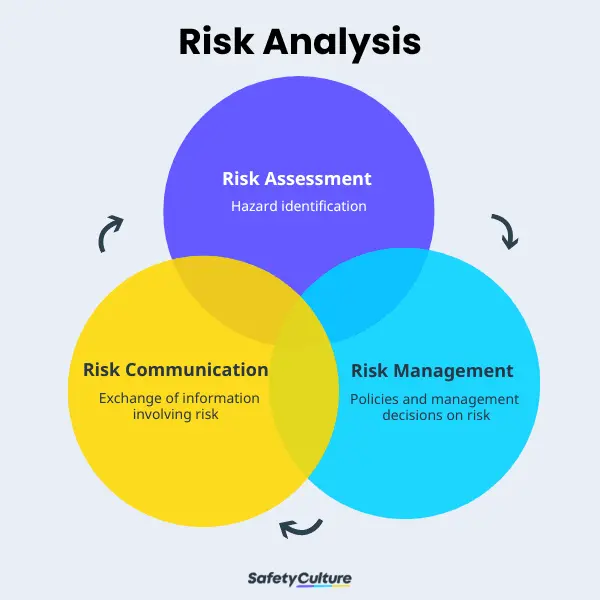Exploring the Expanding Importance of Risk Management in Organizational Strategy
Exploring the Expanding Importance of Risk Management in Organizational Strategy
Blog Article
Exploring the Relevance of Risk Management for Effective Decision-Making Approaches
In the intricate globe of business, Risk Management arises as an essential variable in the decision-making process. The capability to identify potential hazards and possibilities, and strategize accordingly, can spell the distinction in between success and failing.
Comprehending the Concept of Risk Management
Risk Management, a vital component in decision-making, is typically misinterpreted or oversimplified. Normally, it refers to the identification, examination, and prioritization of dangers to reduce, check, and manage the chance or impact of regrettable events. However, it's not simply regarding stopping negative end results, but likewise about identifying possible opportunities. Risk Management includes organized and disciplined strategies, using information and insightful evaluations. It needs a detailed understanding of the company's context, objectives, and the prospective dangers that might combat them. From monetary uncertainties, legal responsibilities, critical Management mistakes, to accidents and all-natural disasters, it resolves numerous threats. Significantly, efficient Risk Management is not stagnant; it's a continual, positive procedure that evolves with transforming scenarios.
The Duty of Risk Management in Decision-Making Processes
In the realm of tactical planning and service operations, Risk Management plays an indispensable duty in decision-making processes. It aids in determining prospective threats and uncertainties that can impact the accomplishment of service purposes. By tracing these threats, companies can develop approaches to reduce their influence, ensuring business connection and security. Risk Management hence ends up being an essential tool in decision-making, aiding leaders to make informed choices based on an extensive understanding of the dangers involved. It encourages a proactive method, enabling companies to anticipate and prepare for feasible future circumstances. This significantly decreases the chance of negative consequences, promoting much more reliable and reliable decision-making approaches. Risk Management serves as an essential component in the decision-making processes of any company.

Exactly How Risk Management Enhances Strategic Planning
In the context of calculated preparation, Risk Management plays a critical role. Launching with the identification of possible dangers, it additionally includes the implementation of Risk mitigation steps. The duty of Risk Management is not fixed but vibrant, as it demands consistent monitoring and adjusting of techniques.
Recognizing Possible Dangers

Implementing Risk Reduction
Risk mitigation approaches can range from Risk avoidance, Risk transfer, to risk decrease. Each method should be tailored to the specific Risk, considering its potential influence and the company's Risk tolerance. Efficient Risk mitigation calls for a deep understanding of the Risk landscape and the prospective influence of each Risk.
Monitoring and Changing Approaches
Though Risk mitigation is an essential action in calculated preparation, continuous tracking and change of these techniques is just as essential. It additionally gives an opportunity to assess the success of the Risk Management measures, allowing changes to be made where necessary, additional boosting critical planning. Surveillance and adjusting Risk Management approaches is an important part for improving a company's resilience and strategic planning.
Case Researches: Effective Risk Management and Decision-Making
On the planet of service and financing, effective Risk Management and decision-making typically act as the columns of thriving ventures. One such entity is a multinational oil business that mitigated economic loss by hedging against fluctuating oil rates. In an additional circumstances, a tech startup grew by identifying and accepting risky, high-reward strategies in an unpredictable market. An international bank, encountered with governing uncertainties, effectively navigated the circumstance with positive Risk analysis and vibrant decision-making. These cases highlight the value of sharp Risk Management in decision-making processes. It is not the lack of Risk, but the Management of it, that frequently differentiates successful business from unsuccessful ones. These cases underscore the critical role of Risk Management in calculated decision-making. importance of risk management.
Devices and Techniques for Effective Risk Management
Browsing look at more info the intricate labyrinth of Risk Management requires the ideal set of strategies and devices. These devices, such as Risk registers and heat maps, aid in determining and evaluating potential risks. Strategies include both measurable techniques, like sensitivity analysis, and qualitative methods, such as SWOT evaluation. These help in prioritizing dangers based upon their prospective impact and likelihood. Risk action strategies, a crucial component of Risk Management, entail approving, avoiding, moving, or mitigating dangers. Surveillance and controlling dangers, via regular audits and evaluations, guarantee that the methods continue to be efficient. With these methods and devices, decision-makers can browse the complicated landscape of Risk Management, therefore assisting in notified and efficient decision-making.
Future Fads in Risk Management and Decision-Making Strategies
As we check out the huge landscape of Risk Management, it becomes apparent that the tools and strategies used today will certainly proceed to evolve. The idea of Risk society, where every participant of a company is aware and included in Risk Management, will certainly gain much more prestige. These patterns proclaim a more comprehensive and positive strategy towards Risk Management and decision-making.
Final thought

Risk Management hence ends up being an important device in decision-making, assisting leaders to make informed selections based on a comprehensive understanding of the dangers entailed. Risk mitigation strategies can range from Risk avoidance, Risk transfer, to run the risk of decrease (importance of risk management). Efficient Risk reduction requires a deep understanding of the Risk landscape and the possible impact of each Risk. Risk response methods, a crucial component of Risk Management, entail accepting, avoiding, moving, or mitigating risks. The principle of Risk culture, where every member of an organization is conscious and involved in Risk Management, will get much more prominence
Report this page